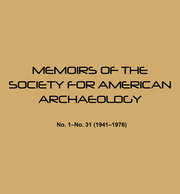Article contents
Extract
Hunting remains the major activity of the Birhor despite the rapid deforestation now going on in the district. The forests in which they hunt are of second-growth sal trees, quite bushy and dense.
Within these forests, the Birhor rely entirely on small game and do not attempt to take anything larger than wild pigs and smaller varieties of deer. The Birhor word for the small barking deer (Cervulus muntjac) is jflu which is the same as their word for meat. But today the jflu, apparently once quite important to the Birhor, is taken only rarely. Also formerly of importance to the Birhor were monkeys—both the langur and macaque. These animals have decreased in number to the point that they now occur as isolated populations in rugged ghat areas or on steep hillsides. Formerly, they were hunted for food, and the hide of the langur was traded to Ghasi drum-makers. Today, there exists a market for live macaques but most Birhor bands of Hazaribagh District, at the present, take no monkeys within the course of a year. Of primary importance today is the hare (kulhāi). It is this animal which the Birhor think of, talk of, and hunt daily.
- Type
- Section II: The Birhor of Hazaribagh
- Information
- Memoirs of the Society for American Archaeology , Volume 29: A Model of band society , 1974 , pp. 84 - 96
- Copyright
- Copyright © Society for American Archaeology 1974
- 1
- Cited by


